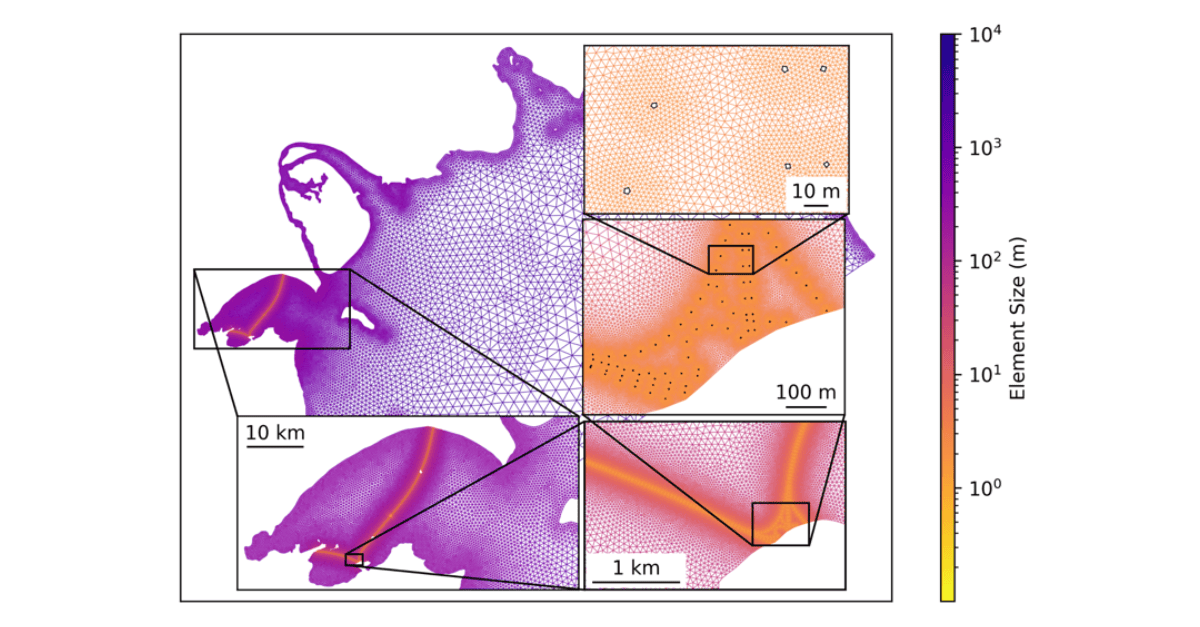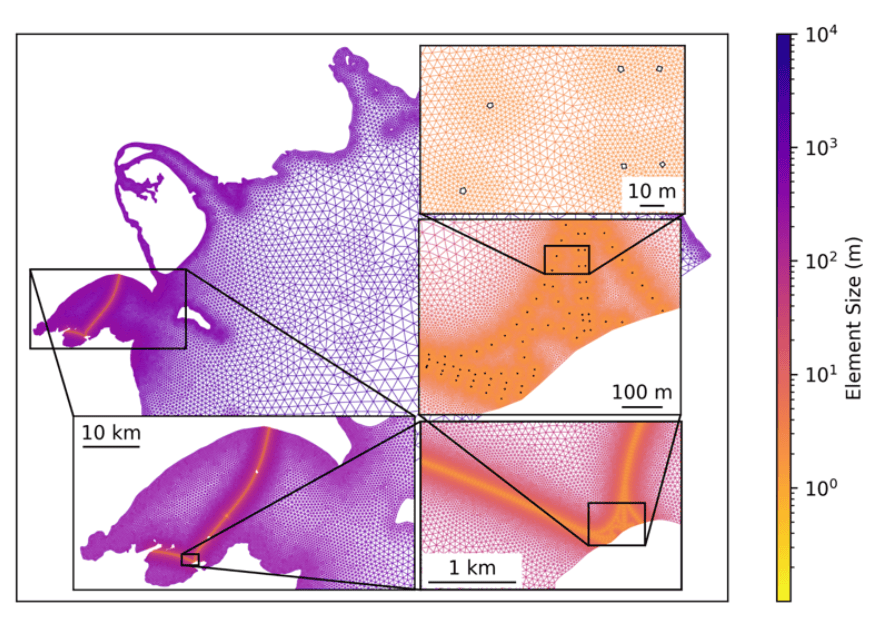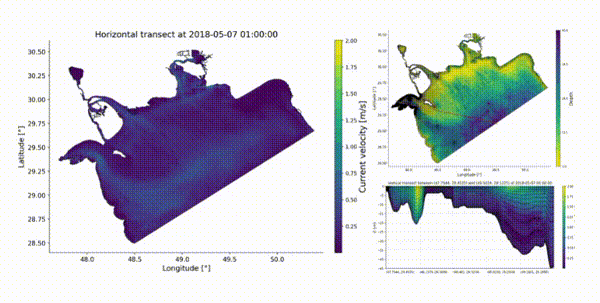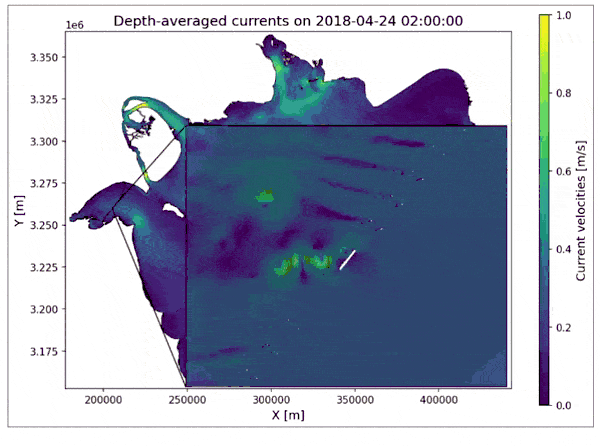
Multiscale Ocean Modelling: Bridging the Gap between Global Changes and Local Impacts
Introduction
Coastal regions are becoming increasingly populated and industrialized, with nearly one-third of humanity residing within 100 kilometers of the coast. This demographic trend poses dual challenges: heightened vulnerability to climate-induced phenomena such as sea level rise and extreme weather events, and intensified pressure on marine ecosystems from human activities such as coastal developments and marine pollution.
Addressing these challenges necessitates sophisticated ocean modelling that can seamlessly connect the global and local scales to make the link between stressors and their consequences. Prof. Emmanuel Hanert and his team at UCLouvain (Belgium) aim to utilize the MeluXina supercomputer to enhance the SLIM multiscale ocean model to seamlessly bridge the gap between local and global scales. This project aims to deploy SLIM across extensive coastal areas, employing high-resolution details where needed, by harnessing the computation power of parallel GPU computing infrastructures like MeluXina.
The Challenge of This Research
Coastal areas face various threats from climate change and human activities, including:
- Sea Level Rise: Affecting land inhabited by hundreds of millions, leading to increased coastal flooding.
- Storm Surges and Flooding: Being intensified, made more powerful, and occurring more frequently due to climate change, they pose direct threats to human activities and ecosystems.
- Degrading Marine Ecosystems: Vital ecosystems like coral reefs and mangroves, which protect coastlines and support marine biodiversity, are rapidly degrading due to human activities.
To address these challenges, ocean models must accurately simulate, at the same time, the large-scale oceanic circulation and its local effects. This requires high spatial and temporal resolutions, which current models struggle to achieve efficiently. Current ocean models, whose development often started decades ago, cannot span a range of scales broad enough to bridge the gap between the global and local scales. The challenge in ocean modelling is therefore to develop a new generation of models relying on flexible numerical methods and able to harness the potential of the latest GPU computing infrastructures.
The MeluXina Solution
Ocean models are complex computational codes composed of tens of thousands of lines of code. Historically, these models were designed to run on CPU-based computing infrastructures. In recent years, however, high-performance computing has transitioned from CPU-based to GPU-based architectures, fundamentally changing computing paradigms. This shift requires rewriting the code of existing models to fully exploit the substantial computational power of GPUs, such as those available on MeluXina.
By using MeluXina, we can run coastal ocean simulations at a spatial resolution never achieved before. Currently, 3D coastal ocean models typically have a horizontal resolution of about one kilometer. With our model SLIM, which has been entirely rewritten to run on GPUs, we can conduct 3D simulations representing all necessary physics at a horizontal resolution of a few tens of meters. This unprecedented resolution will allow us to explicitly capture the complex effects of the coastline’s intricate nature, including small-scale features like bays, river mouths, artificial structures, coral reefs, and inlets, on ocean current dynamics.
By leveraging the computational power of MeluXina, this project will bring SLIM to another level by achieving:
- High-resolution simulations with a resolution of a few tens of meters, a significant improvement over current ocean models.
- Operational use and high-resolution daily forecasting of the state of the sea for real-time decision making.
- Accurate impact assessment of both the impacts of climate change on human activities through as storm surges, coastal flooding risk and sea-level rise, but also the impacts of human activities on marine ecosystems.
The Impact of Multiscale Ocean Modelling
The impact of this research is multi-faceted:
- Risk Mitigation: Improved ability to forecast and respond to coastal flooding and storm surges, protecting vulnerable populations and infrastructure.
- Ecosystem Protection: Better simulations to understand and mitigate impacts of human activities such as coastal developments and land-based pollution on crucial marine ecosystems like coral reefs and mangroves.
- Enhanced Modelling: Development of a next-generation ocean model capable of bridging global and local scales, aiding in climate change adaptation strategies.
Conclusion
This project represents a significant advancement in multiscale ocean modelling, utilizing the powerful capabilities of the MeluXina supercomputer. By enhancing the SLIM model, Prof. Hanert’s team aims to provide accurate, high-resolution forecasts that bridge the gap between global climate changes and their local impacts. The outcomes will not only enhance scientific understanding but also support practical measures to protect coastal populations and ecosystems, setting a new standard in oceanographic research.
Illustrations
Below are some illustrations of the model application to Kuwait Bay, located in the northern Arabian/Persian Gulf. We investigated the impact of a major bridge, over 40 km long and composed of thousands of pillars, on the bay’s current dynamics and water quality. The model’s resolution is so fine (about 1 meter) that it can explicitly represent each pillar of the bridge.





